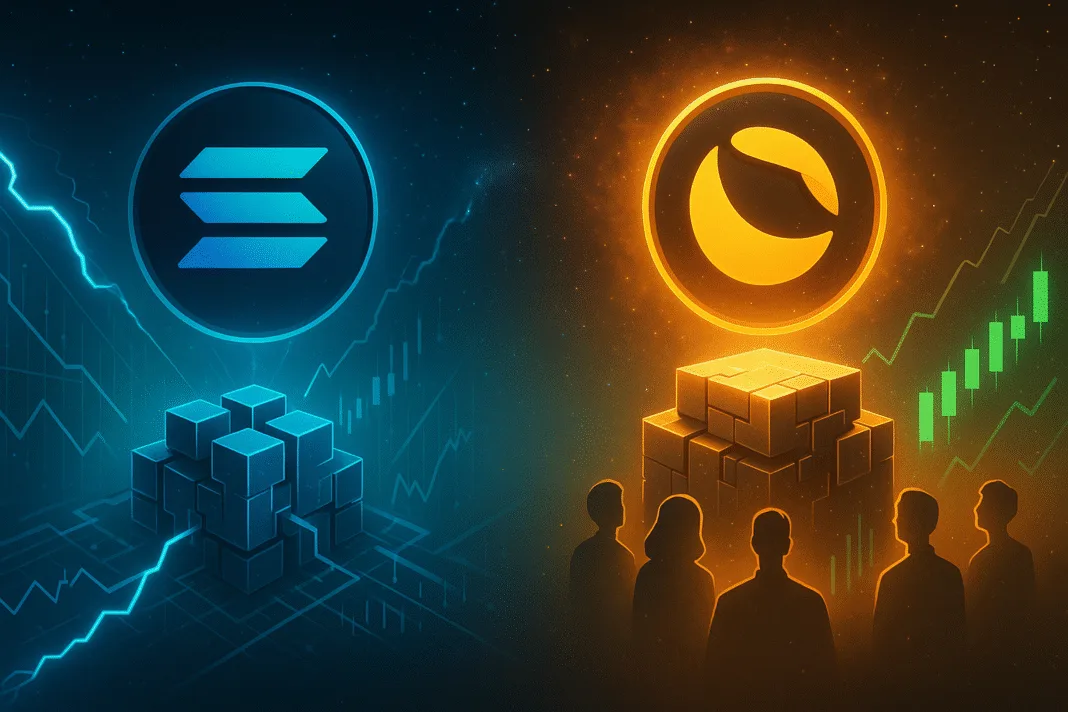Solana (SOL) and Terra Luna Classic (LUNC) are prominent layer-1 blockchain tokens, each with distinct features. Solana is renowned for its high scalability, fast transaction speeds, and low fees, leveraging a Proof of History consensus mechanism for censorship resistance.
Its ecosystem supports smart contracts, NFTs, and DeFi, but it has faced network outages, raising concerns about stability. LUNC, the original token of the Terra blockchain, rebranded after the 2022 UST collapse, focuses on community-driven governance and decentralization, operating without a stablecoin peg.
Solana’s strengths lie in its technical prowess, with a robust team delivering frequent updates. However, its centralization and venture capital influence have drawn criticism. LUNC, despite its turbulent past, has shown resilience through community-led revival efforts, including a 1.2% tax burn policy to reduce its 5.6 trillion circulating supply, aiming for a 10 billion token target. This deflationary mechanism could enhance LUNC’s value over time.
LUNC’s edge over SOL stems from its community focus and lower entry price, attracting investors seeking high growth potential. As of February 2025, LUNC trades at $0.000065, with a market cap of $361.7 million, while SOL is at $145.58. LUNC’s staking ratio has climbed to 15.85%, signaling growing investor confidence. Over 406 billion tokens have been burned, reducing supply and potentially driving price appreciation. Solana’s higher fees and occasional network issues contrast with LUNC’s stability in high-data scenarios.
While Solana excels in scalability, LUNC’s community-driven approach, deflationary strategy, and lower cost make it a compelling choice for risk-tolerant investors betting on its ecosystem revival.

